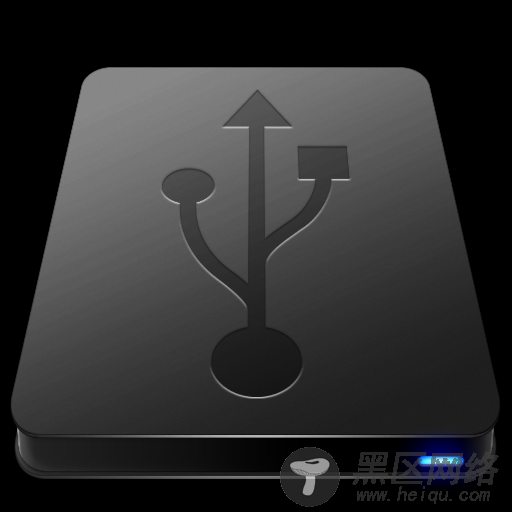通用串行总线(USB)被设计成为连接计算机外设的标准,如键盘、鼠标、打印机、数码相机、便携式媒体播放器、磁盘和网络适配器等等 - 来源:Wikipedia

它已经成为了一个工业标准,现在很难看到一个没有USB口的计算机了。USB闪存的使用使得它更加流行。在Linux上,我们可以使用lsusb来列出USB设备和它的属性。
什么是lsusb在它的手册上,lsusb定义成:
显示系统中以及连接到系统的USB总线信息的工具。
如何运行lsusb? 要运行lsusb,你可以直接在控制台输入lsusb。
$ lsusb Bus 001 Device 001: ID 1d6b:0002 Linux Foundation 2.0 root hub Bus 002 Device 001: ID 1d6b:0002 Linux Foundation 2.0 root hub Bus 003 Device 001: ID 1d6b:0001 Linux Foundation 1.1 root hub Bus 004 Device 001: ID 1d6b:0001 Linux Foundation 1.1 root hub Bus 005 Device 001: ID 1d6b:0001 Linux Foundation 1.1 root hub Bus 006 Device 001: ID 1d6b:0001 Linux Foundation 1.1 root hub Bus 007 Device 001: ID 1d6b:0001 Linux Foundation 1.1 root hub Bus 008 Device 001: ID 1d6b:0001 Linux Foundation 1.1 root hub Bus 002 Device 003: ID 17ef:4811 Lenovo Integrated Webcam [R5U877] Bus 008 Device 002: ID 0a5c:217f Broadcom Corp. Bluetooth Controllerlsusb会显示驱动和内部连接到你系统的设备。
下面介绍如何理解输出。我抓取了上面输出的最后一行:
Bus 008 Device 002 : ID 0a5c:217f Broadcom Corp. Bluetooth ControllerBus 008 : 指明设备连接到哪(哪条总线)
Device 002 : 表明这是连接到总线上的第二台设备
ID : 设备的ID
Broadcom Corp. Bluetooth Controller :生产商名字和设备名
我们同样可以看到在我们的系统中同时使用了USB2.0 root hub驱动和USB 1.1 root hub驱动。
用dmesg命令同样可以看到。下面是一个例子。
$ dmesg |grep -i usb [ 0.353138] usbcore: registered new interface driver usbfs [ 0.353150] usbcore: registered new interface driver hub [ 0.353182] usbcore: registered new device driver usb [ 0.730026] ehci_hcd: USB 2.0 ‘Enhanced’ Host Controller (EHCI) Driver [ 0.730116] ehci_hcd 0000:00:1a.7: new USB bus registered, assigned bus number 1 [ 0.748019] ehci_hcd 0000:00:1a.7: USB 2.0 started, EHCI 1.00 [ 0.748169] hub 1-0:1.0: USB hub found [ 0.748336] ehci_hcd 0000:00:1d.7: new USB bus registered, assigned bus number 2 [ 0.768019] ehci_hcd 0000:00:1d.7: USB 2.0 started, EHCI 1.00 [ 0.768147] hub 2-0:1.0: USB hub found [ 0.768236] ohci_hcd: USB 1.1 ‘Open’ Host Controller (OHCI) Driver [ 0.768251] uhci_hcd: USB Universal Host Controller Interface driver 如何列出USB详细信息使用-v选项来开启。下面是一个例子。
$ lsusb -v Interface Descriptor: bLength 9 bDescriptorType 4 bInterfaceNumber 1 bAlternateSetting 5 bNumEndpoints 2 bInterfaceClass 224 Wireless bInterfaceSubClass 1 Radio Frequency bInterfaceProtocol 1 Bluetooth iInterface 0 Endpoint Descriptor: bLength 7 bDescriptorType 5 bEndpointAddress 0×83 EP 3 IN bmAttributes 1 Transfer Type Isochronous Synch Type None Usage Type Data wMaxPacketSize 0×0040 1x 64 bytes bInterval 1 Endpoint Descriptor: bLength 7 bDescriptorType 5 bEndpointAddress 0×03 EP 3 OUT bmAttributes 1 Transfer Type Isochronous Synch Type None Usage Type Data wMaxPacketSize 0×0040 1x 64 bytes bInterval 1 找出连接了多少USB设备使用下面的命令
$ find /dev/bus接着你会看到像下面的输出:
/dev/bus /dev/bus/usb /dev/bus/usb/008 /dev/bus/usb/008/002 /dev/bus/usb/008/001 /dev/bus/usb/007 /dev/bus/usb/007/001 /dev/bus/usb/006 /dev/bus/usb/006/001 /dev/bus/usb/005 /dev/bus/usb/005/001 /dev/bus/usb/004 /dev/bus/usb/004/001 /dev/bus/usb/003 /dev/bus/usb/003/001 /dev/bus/usb/002 /dev/bus/usb/002/004 /dev/bus/usb/002/003 /dev/bus/usb/002/001 /dev/bus/usb/001 /dev/bus/usb/001/001使用lsusb 命令 的-D 选项,你可以打印特定设备的详细信息。下面是一个博通蓝牙设备的示例。
$ lsusb -D /dev/bus/usb/008/002 Device: ID 0a5c:217f Broadcom Corp. Bluetooth Controller Couldn’t open device, some information will be missing Device Descriptor: bLength 18 bDescriptorType 1 bcdUSB 2.00 bDeviceClass 224 Wireless bDeviceSubClass 1 Radio Frequency bDeviceProtocol 1 Bluetooth bMaxPacketSize0 64 idVendor 0x0a5c Broadcom Corp. idProduct 0x217f Bluetooth Controller bcdDevice 3.60 iManufacturer 1 iProduct 2 iSerial 3 bNumConfigurations 1 Configuration Descriptor: bLength 9 bDescriptorType 2 wTotalLength 216 bNumInterfaces 4 bConfigurationValue 1 iConfiguration 0 bmAttributes 0xe0 Self Powered Remote Wakeup MaxPower 0mA Interface Descriptor: bLength 9 bDescriptorType 4 bInterfaceNumber 0 bAlternateSetting 0 bNumEndpoints 3 bInterfaceClass 224 Wireless bInterfaceSubClass 1 Radio Frequency bInterfaceProtocol 1 Bluetooth iInterface 0 Endpoint Descriptor: bLength 7 bDescriptorType 5 bEndpointAddress 0×81 EP 1 IN bmAttributes 3 Transfer Type Interrupt Synch Type None Usage Type Data wMaxPacketSize 0×0010 1x 16 bytes bInterval 1 Endpoint Descriptor: bLength 7 bDescriptorType 5 bEndpointAddress 0×82 EP 2 IN bmAttributes 2 Transfer Type Bulk Synch Type None Usage Type Data wMaxPacketSize 0×0040 1x 64 bytes bInterval 1 Endpoint Descriptor: bLength 7 bDescriptorType 5 bEndpointAddress 0×02 EP 2 OUT bmAttributes 2 Transfer Type Bulk Synch Type None Usage Type Data wMaxPacketSize 0×0040 1x 64 bytes bInterval 1 找出大容量存储设备既然 lsusb -v给我们很详细的信息,那么你或许会错过一些信息。我们可以使用grep命令指定特定的信息。
